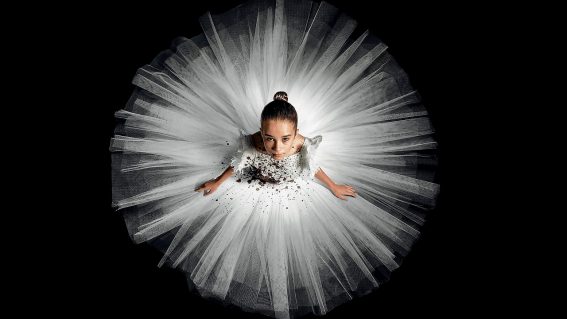Scripting woes mar The Colour Room, a biopic of celebrated ceramic artist Clarice Cliff

Fresh from her breakout role in Bridgerton, Phoebe Dynevor plays celebrated ceramic artist Clarice Cliff in a well-acted biopic that lacks narrative thrust, writes Rory Dohery.
Bridgerton star Phoebe Dynevor opts for a character of significantly lower status in The Colour Room, a light and satisfactory drama about Clarice Cliff, the factory worker turned art-deco ceramist whose idiosyncratic crockery swept Britain in the late 20s and 30s. The script feels perfunctory at best—but if the story is cheap and cracked, there’s a bright and suitably inelegant coat of paint in the solid performances and subtly stylish filmmaking from director Claire McCarthy.
Wilkinson’s, a pottery factory in Stoke-on-Trent, is a fading business in a dying industry. The machinations of public taste means co-manager Colley Shorter (Matthew Goode) is quietly desperate for something fresh. But freshness is risky, and staleness can be fiercely clung to in fear of failure.
Enter Clarice Cliff. She stands out, her bright costume highlighted against a landscape of polluted hues. She’s observed by her peers as a bit odd, probably something to do with the thrills she finds in endless industrial spaces. In her follow-up to the breakout success achieved through Bridgerton, Dynevor does not disappoint, holding her own against seas of more established British character actors and injecting Clarice with the charm and boldness her pottery would become famous for. Goode, in addition, is commendable for not phoning it in, always trying at his occasionally flimsy character.
McCarthy, who more extensively has worked on shorts and television, brings an artistic flair to the pedestrian proceedings, specifically with cinematographer Denson Baker. Rainbow tinted lens flares flick up against dull grey stone, and, as Clarice moves her way up the factory ladder, the presence of eye-catching natural light increases, giving us brighter and more dynamic palettes. The camera moves in a purposeful, gliding way, opening the frame up for layered shot compositions that never look artificial or distracting.
Nitin Sawhney’s score is also accomplished, favouring percussion and featuring the occasional plucked strings. He emphasises the hands behind the instruments; we hear them beating out the rhythm on real, tangible materials, adding to the tactile factory sequences. All together, it’s anything but amateurish; McCarthy leads a strong team behind the camera. But there’s not enough of a confident hand to elevate the script, the film still feels meekly subservient to the story as a TV production would.
The Colour Room’s scripting woes stem from the fact that there’s little narrative thrust, and we’re left wondering what purpose the film has rather than putting up an interesting piece of social and cultural history on screen. We never see the blinding brilliance of Cliff’s art brought to life. Her art is presented to us, and while we get to see a good range of reactions to it, there’s never a moment of transcendence where what’s so unique about her work is visually communicated to us.

While Clarice faces her fair share of obstacles to success, they never come from Colley, who, after an initial hesitance, is always onboard with her ideas. Elsewhere the drama doesn’t exist beneath the surface; every piece of conflict is told to the audience exactly as it appears. The factory life also feels underwhelming. We never get overly connected with the lived experiences of workers—especially the female ones—in the 20s labour environment. Screenwriter Claire Peate seems aware of this last point, as there’s some pointed last minute course correction to feature the women of Wilkinson’s—though their inclusion should have been integrated sooner and better.
Clarice’s relationships seem to only exist in the scenes where the film needs them to; her connection with her sister seems, after a certain point, to barely impact her at all; and there’s some soapy drama with a fiance that feels overwrought. It’s not that the events happening to Clarice aren’t significant or emotional on their own, but by presenting them in such a tired story arc the impact of her life’s journey is deadened.
Enjoyment of The Colour Room entirely depends on how compelling one finds a fresh topic is within a stale structure. Its sweetness certainly isn’t inauthentic, and it’s a neat backstory to a part of British culture that Bridgerton’s demographic won’t know. But with a little more careful attention, it wouldn’t have been hard to clean up a lot of its imperfections.















